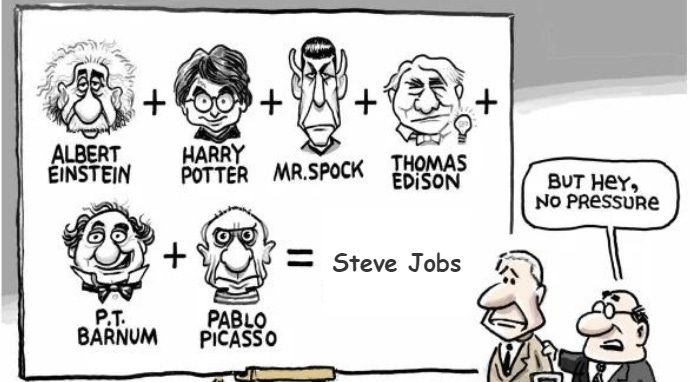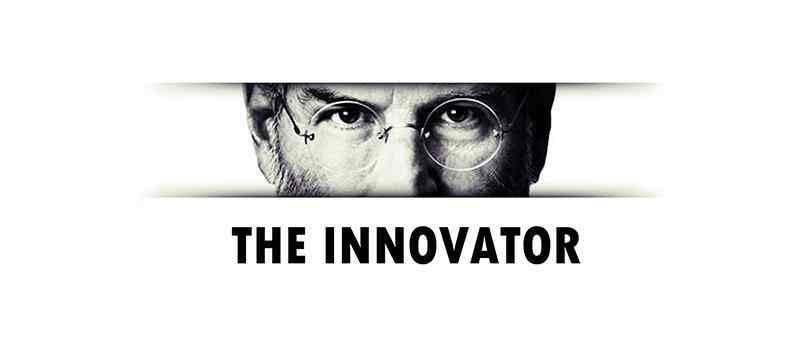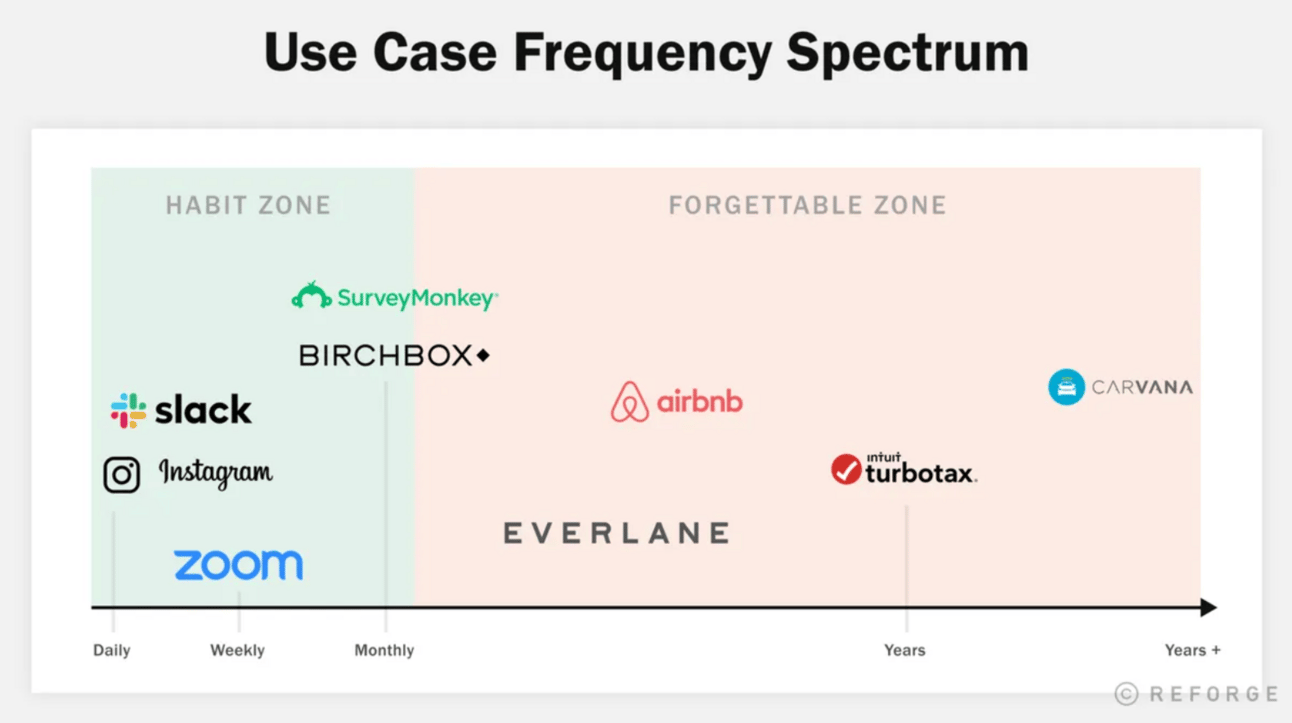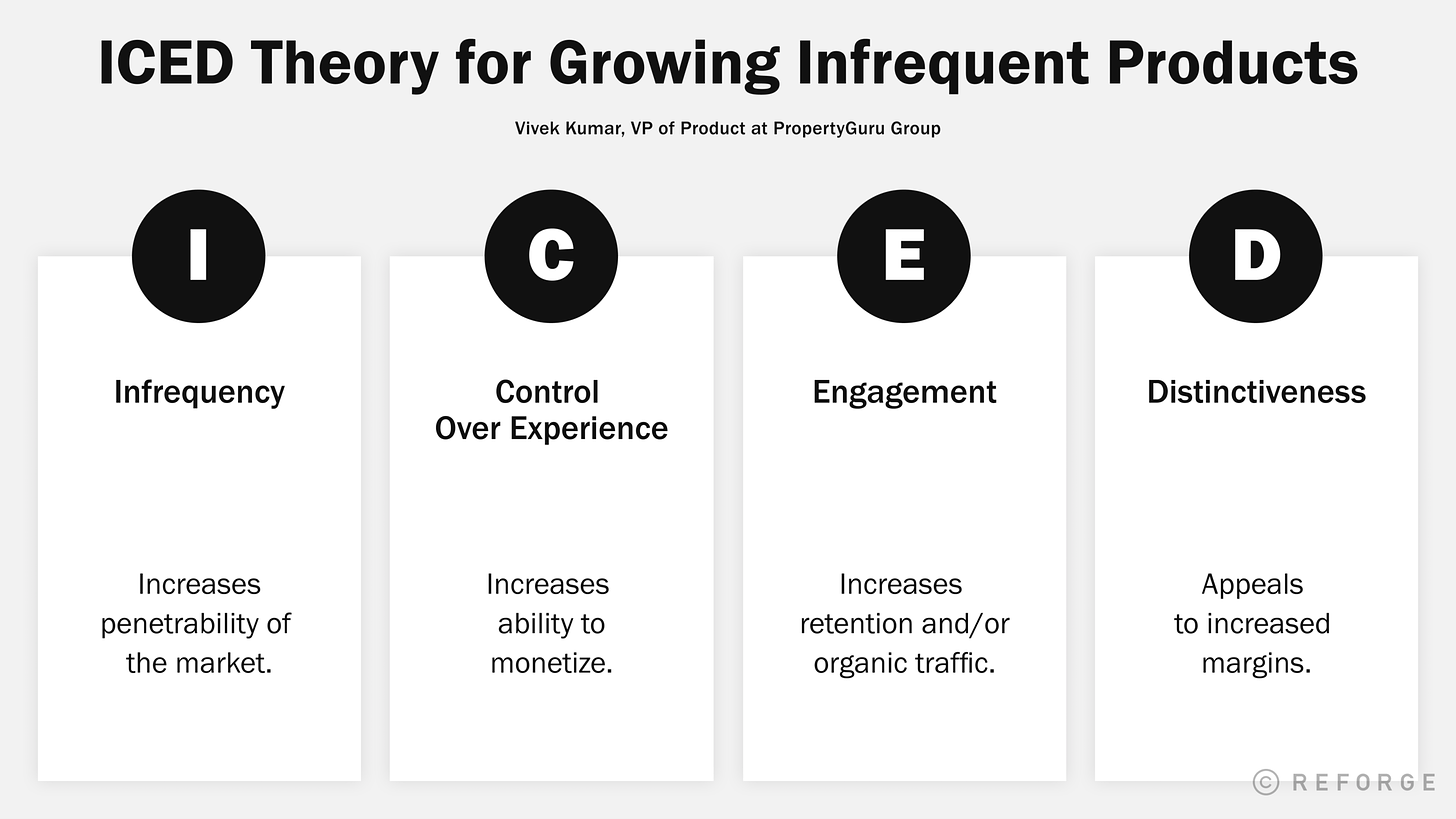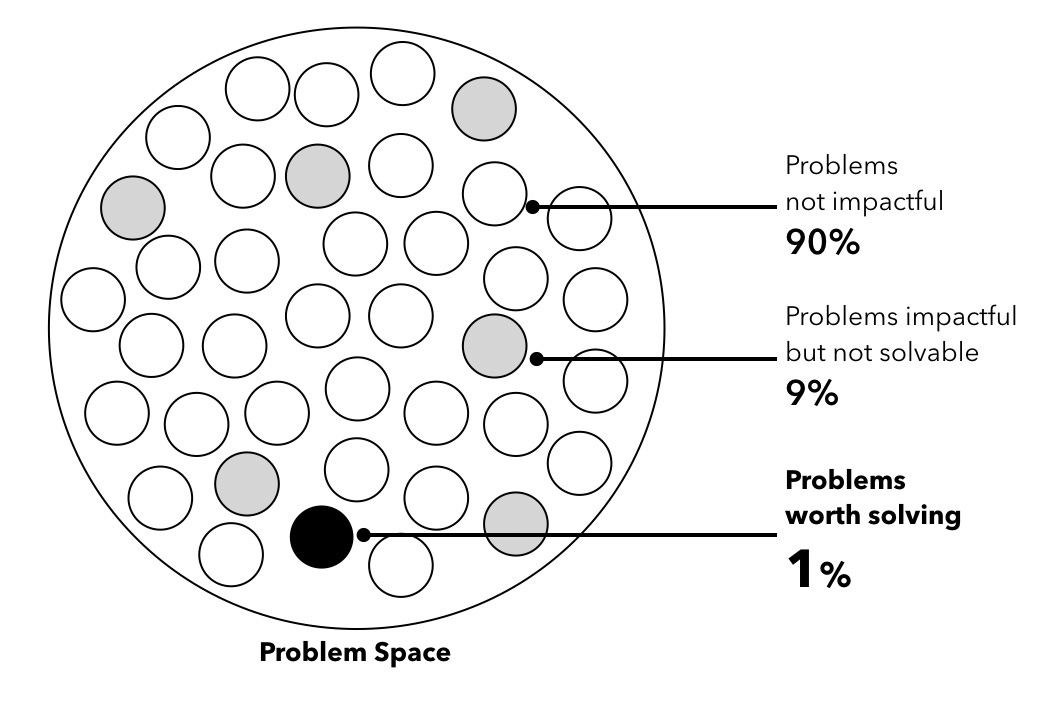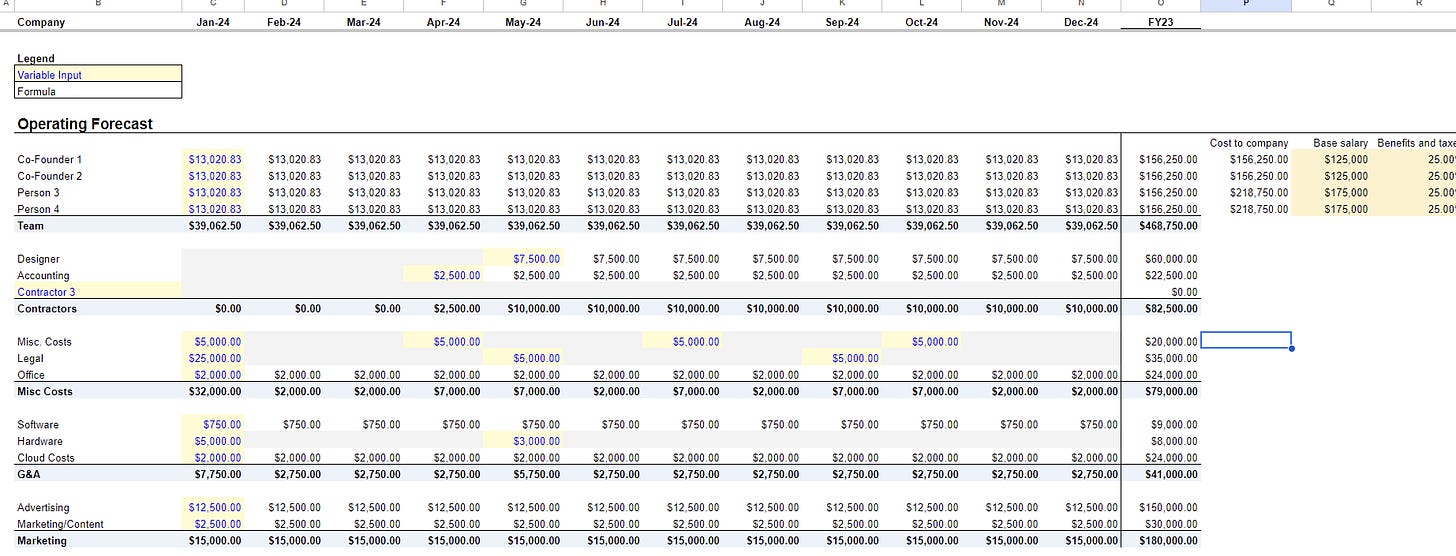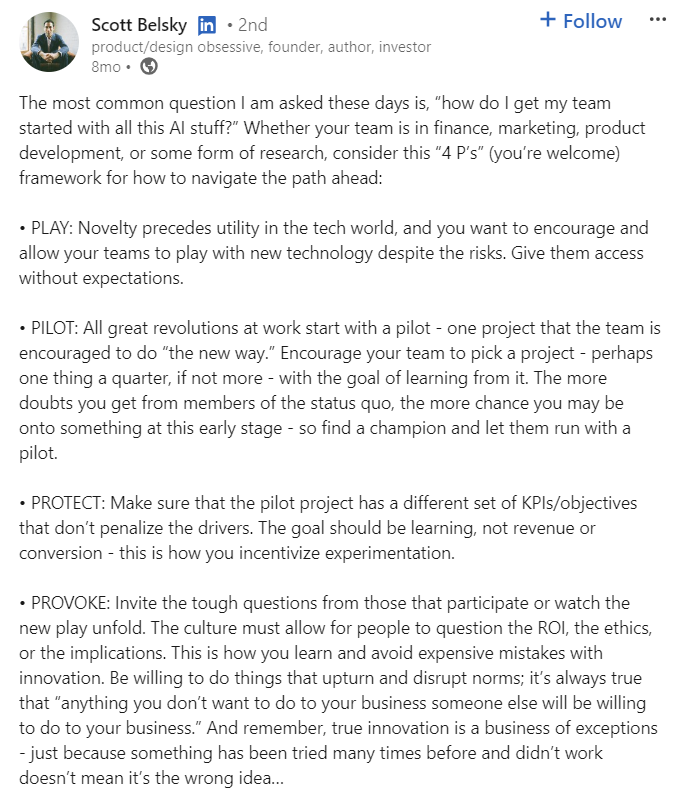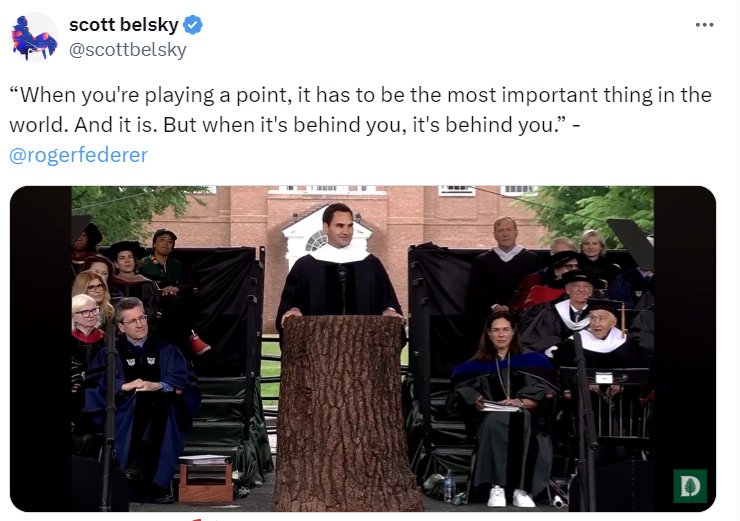Steve Jobs’ 9 Product Development Tactics For Startups & The 4 P’s of AI | VC Jobs
ICED Framework To Grow Infrequent Products & Startup Financial Model Template...
👋Hey Sahil here! Welcome to this bi-weekly venture curator newsletter. Each week, I tackle questions about building products, startups, growth, and venture capital! In today’s newsletter, we dive into -
Featured Startup: The Most Emerging Startups You Can't Miss….
Deep Dive: Steve Jobs’ 9 Product Development Tactics For Startups.
Quick Dive:
ICED Theory - Framework To Grow Infrequent Products.
99 Problems But Not 1 Worth Solving - Solve Problems, Not Symptoms.
Do Early-Stage Startups Need a Financial Model For Fundraising?
Framework: The 4 P’s of AI
Major News: Stepstone Launches $3.3 Billion VC Fund, OpenAI Hires Former Nextdoor CEO as CFO, OpenAI's Rival Mistral AI Raised $640 Million & India's First E-Scooter Makers $660 Million IPO.
Best Tweet Of This Week On Startups, VC & AI.
VC Jobs & Internships: From Scout to Partner.
FEATURED STARTUP
The Most Emerging Startup…
Does anyone else feel like social media is different now? Like really different from a few years ago?
It used to be about friends, family, colleagues, and classmates, but nowadays, it’s full of ads, influencers, creators, brands, and commerce. The initial social networks were genuinely about networking - they primarily aimed to connect friends. Now, it feels like someone is always selling you something. When did it become this way? When did it become the norm?
In our search, we came across an app called Favs – a platform designed for close friend groups that is rapidly soaring in popularity…
It’s a venture-backed app with support from notable angels from WhatsApp and Foursquare.
Do you know what we like most about the Favs app?
Limited to 50 friends, It has no ads, brands, or algorithms,—just pure updates.
It keeps you informed about key events like birthdays, trips, and special events.
With polls and a maps feature, Favs strengthens connections, reminiscent of old Facebook with a sleek, Apple-like UI.
With this app, we’re super excited to see the social being put back into social media. As a Venture Curator reader, we got you an exclusive invite code available for a limited time only. Use 100401 when you see the gold card.
Download the app here.
TODAY’S DEEP DIVE
Steve Jobs’ 9 Product Development Tactics
When you think about Steve Jobs, you probably think of him as a pioneer of the personal computer era, a passionate designer, and a creative genius who introduced ground-breaking products.
Through his partnership with Apple, Pixar, and NeXT, he was able to transform six industries (personal computers, music, cellular phones, animation, tablet computers, and digital publishing).
In various interviews, he shared some wisdom and knowledge that I believe every founder should consider in early product development. So, grab your coffee, and let’s deep dive into 9 product development tactics that Steve Jobs wishes every founder to follow.
Image Source: Orange Country
1. Create With The Customer’s Experience In Mind
While watching this 1997 video of Steve Jobs at Apple’s Worldwide Developers Conference, I was reminded of the significance of the customer experience. Jobs appears to be responding to an attack in the video, but he’s doing something far more interesting than what’s seen. He ponders and makes a philosophical point regarding his – and Apple’s – approach to product development.
‘I’ve always found that you’ve got to start with the customer experience and work backwards for the technology. You can’t start with the technology and try to figure out where you’re going to try to sell it.
As we have tried to come up with a strategy and a vision for Apple, it started with: What incredible benefits can we give to the customer? Where can we take the customer? Not starting with, Let’s sit down with the engineers and figure out what awesome technology we have and then how are we going to market that?’
Former Apple and Pepsi chief executive John Sculley recounts his conversations with Steve Jobs about customer service. In his words, Steve’s approach was always centred on the customer’s experience rather than the technology.
The final product had to be top-notch, and while it might not be cost-effective initially, it would be a better-looking and better-functioning one.
Some companies have made this notion a core part of their business model and corporate culture. Three companies instantly spring to mind: Zappos, GoPro, and Tesla Motors. These companies’ owners are utterly fixated on the way their customers feel about using their products.
2. Don’t Ask Your Customers What They Want
Jobs’ product-creation philosophy was to avoid asking customers what they wanted because their answers would be predicated on what they already knew based on existing products.
On the contrary, instead of focusing just on the functional needs of customers, he observed what they were trying to accomplish on a social and emotional level as well. He then brainstormed with creative minds and engineers to come up with innovations to help people achieve their goals in both life and work.
Henry Ford, the man who founded the Ford Motor Company, was another industrial designer who operated under the same guiding principle. An unrelenting fervent supporter of new technology, he worked to continually improve the design and manufacturing processes of his products. In contrast to traditional methods of market research, he did not solicit feedback from customers when making product decisions.
“If I’d done what my customers wanted, then I would have built a faster horse,” he famously declared.
Having said that, I believe Henry and Steve had a keen eye for human behaviour.
They’ve freed designers (and engineers) to look at different ways to commercialize innovations and avoid making the common blunder of letting the “voice of the customer” decide the course of their evolution.
Likewise, Apple’s success with this approach can be seen in their Macintosh version, which provided a whole new computing experience for customers.
3. Creativity Is About Connecting The Dots
Steve thought that you needed to do a ‘zoom in, zoom out’ technique. To make connections, you zoom out; to simplify, you zoom in.
If you look at Apple’s breakthroughs, you’ll see that they always occur at the confluence of several industries and technology.
His vision for the iPhone using 3G technology was the best example of this. In the early days of 3G wireless technology, he was able to connect the dots. While 2G was solely for faxing, 3G was capable of a wide range of additional tasks, including taking images.
Having designed the iPod before the iPhone, he was aware of the trend toward smaller consumer gadgets. A phone chip in an iPod would allow individuals to transmit photos wirelessly if he could connect the dots and provide more screen real space, he reasoned.
In his own words, Steve said
“Creativity is just connecting things. When you ask creative people how they did something, they feel a little guilty because they didn’t really do it, they just saw something. It seemed obvious to them after a while. That’s because they were able to connect experiences they’ve had and synthesize new things. And the reason they were able to do that was that they’ve had more experiences or they have thought more about their experiences than other people.”
4. Disruptive Innovation Is The Key Differentiator
Unlike most companies, Jobs was constantly looking for ways to disrupt the technology industry and even Apple’s market with low-cost, simpler solutions.
How did he ensure that his companies stayed relevant through the years?
The answer lies in his disruptive approach to innovation. Whether it’s the original Mac GUI, the iMac, the iPod, iTunes or the iPhone, Steve Jobs has changed the way we think about computers, music players, and cell phones since his time at Apple.
The Macintosh revolutionised personal computing by making it more accessible to the average person. When Apple iPods went on sale in 2001 (with an average of 100 sales per minute), Steve Jobs changed the rules of the digital music business. Following this, he launched the iTunes Music Store in 2003 which has sold one billion songs since its inception.
Steve Jobs became a global media and entertainment industry titan after Disney bought Pixar. Toy Story, their first box office smash, was made possible thanks to his use of cutting-edge 3D animation technology.
With his core belief in disruptive innovation, Jobs demoted his beloved iMac to the status of merely “another device” in 2011, when he announced that iCloud would launch a suite of products that would allow people to live without a personal computer.
Thus, Jobs repeatedly demonstrated his willingness to keep creating, even if it meant sacrificing some of his company’s most successful product lines.
5. Simplify, Then Simplify Some More
Jobs had an innate desire to make things simpler by concentrating on their main function and removing extraneous features.
For example, when it came to the iPod’s design, Jobs was constantly looking for new methods to minimise clutter. For him, it had to take three clicks to get from here to there. He even proposed they do away with the on/off switch at one point. Members of the crew were taken aback at first but quickly concluded that the button was superfluous.
At the heart of the philosophy that guided Apple’s product design was simplicity—not just a superficial simplicity that comes from a product’s uncluttered look and feel and smooth surface—but a deep simplicity that comes from understanding every product’s essence, its engineering complexity and the function of each component.
“It takes a lot of hard work,” Jobs said, “to make something simple, to truly understand the underlying challenges and come up with elegant solutions.” “Simplicity is the ultimate sophistication,” Apple’s 1977 marketing brochure proclaimed, and it went on to become a basic tenet for product development that is still maintained today.
6. Design For The Future
In 1983, Steve Jobs spoke to a gathering of designers in Aspen, Colorado, during the International Design Conference (IDCA). During a time when the majority of the world was uninformed of computers and much less likely to buy one, Jobs sketched out a vision for the World Wide Web, iPad, App Store, Siri and even Google Street View.
Saving time, maximizing resources, and optimizing the exchange of information are the three core themes of all technological developments. By understanding the factors influencing change, Jobs could see the inevitabilities in the direction of progress.
Jobs was equally passionate about the evolution of his product’s design, believing that it should enhance its entire functionality. It wasn’t simply about font pairings, colour schemes, rounded edges, and tidy circuits; it was about how this design aesthetics improved the user experience.
“Design is not just what it looks and feels like,” he says, echoing these ideas. “How it works is design.”
7. Product Before Profit
When Steve Jobs returned to Apple in 1997, he gave a rousing speech to the company’s top executives in which he outlined a fundamental premise of the product development process.
“Instead of focusing on maximizing profits, he explained, the goal was to improve the design of the product.”
He made certain two things to be to better enforce this rule:
Firstly, the organisation was based on job functions rather than business units. Rather than having to worry about fulfilling financial goals or being profitable, teams could concentrate on product development and the customer experience.
Secondly, top management rewards were based on overall company performance across divisions rather than revenue from a single product. This made everyone invested in the success of all their innovations and not just the ones they were responsible for.
Thus, Jobs created an entrepreneur-centric culture at Apple, which has contributed significantly to the company’s success.
8. Unconventional Thinking Is The Key Mantra
As a counterintuitive revolutionary, Jobs popularised the slogan “think different” throughout his firm, displaying posters of history’s nonconformist thinkers such as Gandhi, Albert Einstein, and Pablo Picasso in support of his point of view.
He capitalized on three important and powerful elements -
the power of design, intuitive user interface, and customer experience.
Over time, he learned that this was the greatest strategy for launching a cutting-edge business, cultivating a healthy corporate culture, and creating distinct competitive advantages for the company.
However, he placed design first.
Design was the corporate strategy, the product strategy, and the service strategy. It was unique because no company had ever adopted this design approach before. Customer delight was also an important factor and to ensure quality service was provided, Apple launched the Apple store which was exclusively dedicated to the sales and service of Apple products. This created brand recognition and more importantly established brand loyalty.
9. Don’t Be Afraid To Cannibalize Your Products
The remark “If you don’t cannibalise yourself, someone else will” is one of my favourites from Steve Jobs. Cannibalizing is today’s version of ongoing innovation, which is why it’s so important.
To remain relevant, you must make sure your product is constantly updated to reflect changes in the market and advances in technology.
The history of the iPod and iPhone serves as a good illustration of this point.
It was 2007 when this took place.
The number of iPods sold was soaring. The iPod’s revenue had tripled since its introduction in 2001, and the company’s profit margins were at roughly 40% at that time. Apple derived half of its overall revenue in 2006 from iPod sales and related services. Although the iPod was a commercial success, Steve Jobs introduced the iPhone in 2007, fully expecting it to make the iPod obsolete.
To put this in perspective: from 2006 and 2014, Apple’s sales increased from$19.3B to $182.8B.
Is disrupting a product that generated 50% of your income and was still growing a risky move for you? Yes, absolutely! It was also a hazardous move for Apple because it wasn’t in the cell phone business before this.
But before anyone else could take advantage of the opportunity, Jobs cannibalized his product.
Job’s legacy is intertwined with his sense of aesthetics and desire for design perfection.
There were a few qualities that set him apart from the rest, including his keen eye for beauty, willingness to try new things and learn from failures, and the capacity to create works of art that were nothing short of masterful.
PARTNERSHIP WITH US
Want to get your brand in front of 50,000+ founders, investors, executives, and startup operators? For details on our sponsorships, fill up this quick form and we’ll get in touch.
QUICK DIVES
1. ICED Theory - Framework To Grow Infrequent Products.
Customers use your product or service at a certain frequency. Like - Slack is used daily while TurboTax will only be used once a year.
Daily - Slack, Zynga, Facebook, etc.
Weekly - Uber, DoorDash, Zoom, Credit Karma, etc.
Monthly - Uber, Credit Karma, ISPY, DoorDash, etc.
Quarterly - Everlane, Lovevery, etc.
Yearly+ - Zillow, TurboTax, Thumbtack, Opendoor, Carvana, etc.
Growing products that are infrequently used can be more difficult — it’s much harder to tap into habitual customer behaviour and much easier to forget.
The ICED theory helps products grow even if they’re infrequently used:
Infrequency → how frequently your product is purchased
Control Over Experience → how easy it is to control the user’s experience (and monetize)
Engagement → how easy it is to drive user engagement
Distinctiveness → how unique and memorable your product is
Unlike frequent products where growth is heavily influenced by retention, infrequent products are measured by market penetration. This is why Airbnb focused so heavily on building out its brand equity and focused heavily on design.
Making informed tradeoffs on these dimensions will help infrequent products find product-market fit and, later, scale much more easily.
2. 99 Problems But Not 1 Worth Solving - Solve Problems, Not Symptoms.
A concept called “Problem-Solution Fit” is a premise of product market fit. Understanding the problem you are trying to solve lays the foundations for innovative business models.
Businesses that manage to scale over the long term, solve real problems, and as a result, offer customers a strong value proposition.
Business owners, starting out, often make the avoidable mistake of not forensically understanding the problem they wish to solve and testing the underlying assumptions that a solution is based on.
After interviewing potential customers and receiving positive feedback through market research, an inexperienced founder becomes emboldened that he has identified a problem — one that is shared by many — with the potential to reshape an industry. He builds a product, bootstraps his way to market, and even enjoys some initial success. But, a business based on false hypotheses and biased assumptions is not sustainable.
Solve problems, not symptoms
Often, founders and innovation teams try to solve a symptom of the real problem. As Chris Myers, co-founder and CEO of BodeTree outlines:
“If you react instinctively and without deep thought, you’ll find yourself mistaking that symptom for the problem itself. When this happens, any solution you implement acts as a temporary and often misguided fix.”
One approach, made famous by Toyota, is the five whys, described by the architect of the Toyota Production System, Taiichi Ohno, as “the basis of Toyota’s scientific approach. By repeating why five times, the nature of the problem, as well as its solution, becomes clear”. This is an ideal starting point for any business initiative, whether it is a new digital project or a startup.
Understand the root cause of the problem
Regardless of the framework you use, you need to be sure that you understand why the problem exists, and why nobody has solved it yet. There are many useful tools to unroot the cause of the problem many of which Six Sigma outlines here.
At this point, you can estimate who would be willing to pay for this problem to be solved, and what they perceive solves the problem for them. With this information, you are in a strong position to create a product, that at a minimum, will be valuable enough for customers and worth building a business around.
Test assumptions
Almost all startup founders have read The Lean Startup and understand that they need to test the assumptions that a business idea is based on. Failing to understand the reasoning behind these assumptions is risky business. One of the classic assumptions is assuming that there is a need for the product or service. But defining a need is tricky.
What if Steve Jobs had said I know people want touchscreen phones, without testing his assumptions? What he did, in fact, over a two-and-a-half-year period, was unravel unmet needs by thoroughly testing his assumptions — and it paid off.
Common mistakes
Not taking the time to validate assumptions about what customers feel about the problem is a common pitfall. Many hypotheses of failed businesses are formulated with prerequisites about the problem, for instance, people don’t want to use keyboard buttons like on the Blackberry.
Jumping to conclusions based on confirmation bias happens because founders often need their idea to be the solution, as they are emotionally attached to it. They fall into the trap of offering customers a value proposition — that has a clear advantage — without contextualising it. And, they neglect to properly explore all of the layers of the new customer journey and what the customer has to give up to undertake it. As a result, they miss the chance to understand the strongest value proposition. By not looking at the requirements for the solution, the opportunity to find genuine white space is impossible.
Validate then iterate
Once a set of assumptions has been tried and tested, you are in a position to start iterating. Build-measure-learn, the startup mantra that revolutionised fast-moving innovation, promoted the idea that you don’t have to go big and fail big, you can take small steps to change your path until you can ensure that you are on the right path or at least understand early on that you are heading for a dead end.
What if you could know before you go through the trouble of validating the small steps along the way, that you could anticipate the dead-end before you?
If you understand that a problem is real, and you can validate your assumptions around how you understand the problem space, eventually you can craft the solution requirements for solving the problem. When you have a clear overview of the solution requirements, you can start innovating around those, and innovate all possible solutions that fit within the solution parameters.
“If I had asked people what they wanted, they would have said faster horses.”
~ Henry Ford
What did Ford mean by his famous quote? His take on the process of innovation is that you need to look at the requirements of what people need to solve the problem; in his case getting from A to B faster. By understanding the best way to solve the problem instead of giving people what they think they want, you can truly be innovative and not stuck building faster horses.
Once you craft an understanding of all the solutions that fit the requirements, you can validate these before you even start building a product. To do this, it is necessary to understand what the underlying values of the solution are, and what you are asking your customers to give up, in order to adopt your solution.
In essence, by adopting any new solution you give up something, be it time, money, or your routine way of performing the task. In the end, your solution needs to clearly indicate that it provides more value than the status quo to the customer to stand a chance of succeeding. By understanding this, you can probe into the mind of your customer and get an indication of whether you are on the right path, from the offset.
Once this is clear, you can start building the solution and start measuring the impact of the solution and learning from what you measure. By continuously iterating on a path that was initially validated, you stand a much greater chance of achieving success than by blindly choosing one approach.
3. Do Early-Stage Startups Need a Financial Model For Fundraising?
When you learn about entrepreneurship in school you’re taught to have a clear, strong business plan and financial model when you start out, and to use that as a way to communicate the path your business will take.
Source: Financial Modelling Template
The real world is much messier. Any plan you had when you started gets changed quickly. Every day or even hour of your time that you devote to your startup needs to be spent getting it off the ground. The same is true for a financial model. Your projections will be wildly wrong.
Not only that, but the levers you have at your disposal in the model may not end up being what you think they’ll be — the entire business may change, and you likely don’t know enough yet at the pre-seed stage to be sure.
Investors all know this. They see tons of startups and have many first-hand data points showing that everything can change and often does.
What they don’t know is if YOU know that.
Investors are looking to de-risk the idea of investing in you. Startups are inherently so risky that they look for ways to think of your startup as less risky than others. One of those ways is to assess your founder mindset — how much do you “get” what being a founder will really be like?
The thinking there is that the more you “get” it the more you’ll be able to anticipate challenges and be emotionally steady when things get rocky.
This is a very common place where first-time founders and founders who don’t have a strong network fail to build trust with an investor. That might not be fair, but it’s true. Two of those signals for how well someone is ready to be a venture-backed founder are:
How well do they know how to prioritize their time? - Whether they realize everything will change from their “plan” or not. Presenting investors with detailed financial projections at the pre-seed stage fails both of those tests.
Get free access to the financial model template.
Ok… So Why is a Financial Model Useful?
VCs who want to see a model use it as a proxy for understanding whether a founder can correctly break down the incentives and value levers in a problem space.
VCs want to trust that if the business needs to change, the founder will be able to quickly figure out how to evaluate new opportunities and position their product for success in a new market. It's just a different way of de-risking an investment opportunity.
The simple takeaway is that each investor is different in what traits they value and how they reach conviction. So Know your investor - talk to their backed founders, and read their content. Think about the type of investor you want as a partner based on their evaluation approach.
4. Framework: The 4 P’s of AI
If you ever took a marketing class in college you’re probably groaning right now because you’ve heard of the “4 P’s of marketing. - Product, Price, Place, Promotion.”
This framework is unfortunately named the 4 P’s as well but is more practical for startups. Adobe’s Scott Belsky broke down the lifecycle of going from discovering a new AI tool up to when it becomes part of your normal workflow.
It’s relevant regardless of whether your team is just yourself and your cofounders, or if you’ve built a much bigger org:
Join 26000+ Founders, Investors and Startup Enthusiasts Getting Tactics To Build, Learn and Implement About Startups and Venture Capital.
THIS WEEK’S NEWS RECAP
Major News In VC, Startup Funding & Tech
StepStone Group Inc., a global private markets investment firm, closed its $3.3 Billion StepStone VC Secondaries Fund VI. More Here
Reddit & Scooply backer - Collaborative Fund raised $125 million for its sixth flagship fund. More Here
OpenAI named Sarah Friar CFO and Kevin Weil CPO, with experience from Nextdoor, Square, Twitter, Facebook, and Instagram. More Here
Mistral AI, a European AI startup aiming to rival giants like OpenAI and Anthropic, has raised a massive €600 million ($640 million) from General Catalyst. More Here
Indian e-scooter maker Ola Electric has received regulatory approval from the Securities and Exchange Board of India to proceed with its planned $660 million IPO. More Here
Billionaire Elon Musk has moved to dismiss his lawsuit against OpenAI and its CEO Sam Altman, alleging they abandoned the company's original non-profit mission focused on developing AI. More Here
→ Get the most important startup funding, venture capital & tech news. Join 20,000+ early adopters staying ahead of the curve, for free. Subscribed to Venture Daily Digest Newsletter.
TWEET OF THIS WEEK
Best Tweet I Saw This Week
A must-watch video…
How Can I Help You?
Build Your Pitch Deck: We write, design and model your pitch deck into a storyteller book within 4-5 days.
Get Your MVP In 15 Days: Have an Idea? Turn your idea into Reality. Move fast before your competitors.
TODAY’S JOB OPPORTUNITIES
Venture Capital Jobs & Internships
Working Student Venture Capital Cusp capital - Germany - Apply Here
Investment Partner -Hivemind capital partner | USA - Apply Here
Marketing Intern - TNB Aura | Singapore - Apply Here
Program Manager - Plug and play tech venture | USA - Apply Here
DeepTech Analyst Intern - Earlybird | UK - Apply Here
2024-25 Student Venture Partner (SVP) program - Picus Capital | India - Apply Here
Senior Associate, People Operations - Iconiq Capital | USA - Apply Here
Senior Associate - Alumni Venture | USA - Apply Here
Finance & Operations Associate - Coinfund - Apply Here
Ventures Internship - Plug and play tech centre - Apply Here
Analyst Venture Capital - Ona capital | Spain - Apply Here
Operations Analyst - Jetblue Venture | USA - Apply Here
Investment Fellow - Huddle Venture | India - Apply Here
Marketing Associate - Activant Capital | USA - Apply Here
Associate/ Senior Associate – Investments - Nehsam Venture | India - Apply Here
🧐 Some Tips To Break Into VC:
Anonymous asked: How has it been being a career VC?
On the positive end:
I’m incredibly confident in my deal/transaction-related skills. Being a career VC, I’ve seen hundreds of transactions by now, most of which with my nose closer to the docs and the cap table than even the lead VC or the CEO. Only the lawyers are closer. This experience is paying dividends as I navigate thornier transactions on my own now.
I think I’ve developed a pretty strong network, stronger than if I were in operations in a company. My job involves meeting new people constantly, and 7 years of that leads to an interesting network of people across a variety of disciplines.
The mentorship/apprenticeship that comes with being a career VC is pretty good. I’ve never had a good “manager” in this VC career path, but I’ve never felt I needed one either. But as an apprentice learning somewhat of black art, I’m not sure there’s a better way to learn this skill set. The diversity of investors I’ve had the opportunity to learn from has been amazing.
I’ve been in the industry long enough to see certain movies play out to the same ending over and over again; such that I’m developing pattern recognition. Movies with titles like: “The over-promising, under-delivering biz dev deal with Big Co” or “The Amazingly talented mythical 10x developer that was promoted to Tech Manager, who then had to leave the company because he/she couldn’t manage employees and didn’t like the optics of a demotion.”
On the negative side:
I don’t MAKE anything. Jerry Colonna said it best: Entrepreneurs are pie bakers and VCs are pie slicers. I miss baking sometimes. I spent my morning today with my nose in API docs, so I get to scratch that itch once in a while.
Many VCs have said this before me: it’s a surprisingly lonely job. I see my partners on Mondays and part of Tuesdays, but then the rest of the week, everyone on the team is travelling, including myself. So, you meet people all day long, but you don’t see your co-workers much, which is the long-term relationship you build when working in operations.
I’m self-conscious about the fact that I can’t mentor a CEO on how to be a good operator. I try to complement (not compliment) myself when I join a company’s board by encouraging the Founder(s) to add a recovering (or current) CEO as an independent director to the board. I can help with strategy, BD, fundraising inbound corp dev, finance, and even some tech issues. I also really like playing “closer” to new employee recruiting. I suck at helping with day-to-day operations, org chart, managing employees’ career growth, and other related issues that an ex-CEO has mastered.
Looking To Break Into Venture Capital?
Join our VC Crafter community and get access to VC learning resources, daily VC job updates, daily discussion sessions, 1:1 call access, worked as a scout for various VC firms, a CV/Interview preparation guide and more. Don’t miss this opportunity….





